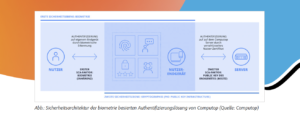E-commerce and digital trends 2021 4/4
A digital boost from Corona? To what extent could the digital industry benefit from the pandemic? And what are the trends for 2021?
Just in time for the new year, software providers Adobe and Akeneo, together with their implementation partner TechDivision, took a look into the crystal ball and identified some of the most exciting topics and developments, which we naturally don’t want to deprive you of.
Josef Willkommer, co-founder and CMO of TechDivision, has identified 11 upcoming trends. You can read about the first nine of these trends here, here and here. In the following, we now present the last two trends!
Trend Number 10: (Online) payment becomes contactless and biometric
Mobile payment in particular did not work in Germany for a long time and was only used very cautiously here. However, after Google Pay and Apple Pay were also launched in Germany, a certain movement was suddenly noticed in this area.
In the fall of 2020, Apple and the savings banks pulled off a coup by incorporating the Girocard into Apple Pay. This is a huge move when you consider that there are over 100 million Girocards in Germany, about half of which are likely due to the Sparkassen. Girocard users can now use Apple Pay in one fell swoop, and according to statements and data from the Sparkassen, plenty of users are making use of it. Once you have tried out payment via Apple Pay, you quickly realize that it is quite practical. On the one hand, you no longer have to touch the terminal, and on the other hand, the whole thing is very convenient, fast and secure. The newer generations of devices in particular now even take over the authentication from the smartphone, so in the best case scenario you don’t have to do anything here except hold the device up to the terminal. In addition, according to a study by the Bundesbank, this is the fastest payment method, well ahead of cash.
We see a further trend for the coming year in the area of payment with the aid of biometric authentication, because as of January 1, credit card payments will have to be PSD2 authenticated, which may lead to more frequent rejections of credit card payments. The German payment service provider Computop already has an appropriate product for this in the drawer with “Biometrics by Computop” and is therefore quite well prepared.
And then we see another topic that can be seen as a kind of competition to the so-called instant payment. This is a relatively new form of transfer that has to be made within 20 seconds in the EU area and is therefore virtually instantaneous, rather than taking 1-2 working days as has been the case to date. The credit card organizations already have a certain respect for this payment method, because it can cost them business, especially in Europe. In addition, they are more likely to pay with this payment method through wallets such as Apple Pay or Google Pay and no longer with the corresponding credit card, although this is actually behind it. To counteract these issues, credit card organizations have developed something called click-to-pay. This is basically also a kind of wallet, but one that is provided by the credit card company and into which, in turn, you can insert your most diverse cards. Click-to-pay was introduced in the USA and Canada in 2020 and is to be available in Germany from mid-2021.
Trend Number 11: Videostreaming
While webinars mushroomed right at the beginning of the Corona pandemic, and a “cooling off” due to a massive oversupply could be observed again relatively quickly, the topic of video streaming has pushed itself more and more into the foreground over the course of the last few months. While podcasts were still a hot topic in the spring of last year, with which more and more companies were dealing, from the middle of 2020 one could increasingly observe the most diverse video formats. Be it through live streams in the style of TV productions broadcast via social media platforms such as LinkedIn, YouTube or Twitch, or at digital events where live streams are integrated.
Not so long ago, live streams were quite complex to implement and often could only be reasonably realized by professional service providers. Then, some time ago, the open source tool OBS (Open Broadcaster Software) came along, which made video recording and live streaming to various channels possible. The tool is relatively powerful, but also anything but self-explanatory. Nevertheless, due to the increasing demand for streamed live content, the software has grown massively in popularity.
In the meantime, there are also purely web-based streaming tools that offer similar functionality to software tools in the style of OBS, but are very easy to use and also do not require any installation orgies, etc., because here everything runs in the browser. One of these tools is called Streamyard. In the fall of 2020, we used it to map the live streaming of a digital event with several speakers and moderators and around 400 participants, and the whole thing worked without a hitch.
We assume that in 2021 the topic of video streaming, and here in particular so-called multistreaming, will become mainstream. Multistreaming makes it possible to broadcast a live stream in parallel via several channels such as Facebook, YouTube, and LinkedIn at the same time, which has several advantages:
▶ Increased reach. When you go live on another platform, you expose your content to a whole new audience. If you do this effectively, it can multiply your viewership.
▶ Insights about your audience. Multistreaming makes it easy to compare how your content performs on different platforms and to test new platforms/channels. Maybe your content performs much better on Facebook and LinkedIn than on YouTube and Twitch – multistreaming provides these insights. You may want to exclude the low performing platforms and focus on the platforms where your content performs well.
▶ Time savings. With multistreaming, you avoid downloading and reuploading your content to other platforms. When reusing your content for other platforms, multistreaming can save you massive amounts of time.
Thanks to the latest streaming tools, it is now possible to produce very professional video formats directly in the browser and play them out across social channels without any great prior knowledge or installation of various software tools. We’ll see a lot more here this year. The whole thing could become an evolution of podcasts supplemented by moving images.
Conclusion
The year 2020 will certainly go down in the history books. While some industries have come under massive pressure as a result of the Corona pandemic or are in some cases on the brink of the abyss, other industries have been able to profit quite strongly in some cases as a result of the situation. One of these winners is undoubtedly the digital industry. The boost that Corona has generated and continues to generate will, in our view, continue for some time to come. In the coming year, we see B2B e-commerce, which has already grown strongly in recent years, once again in focus, because Corona has shown quite clearly that there are hardly any alternatives to this and even industries in which people have relied on personal contacts and personal sales up to now will no longer be competitive in the future without digital offerings.
In the B2B environment in particular, however, the issue of experience must be given high priority, as has been the case in the B2C environment for some time now. B2B customers also want a genuine online shopping experience across the relevant touchpoints. This requires not only comprehensive product information, but also more extensive data, facts, and media in order to provide this experience. Last but not least, we assume that the topic of sustainability and ecology will also receive increased attention in 2021. In our view, companies would be well advised to take a close look at the topic of corporate digital responsibility (CDR) and everything that goes with it.
Source of the text excerpt: https://www.techdivision.com/lp/e-commerce-und-digital-trends-2021



